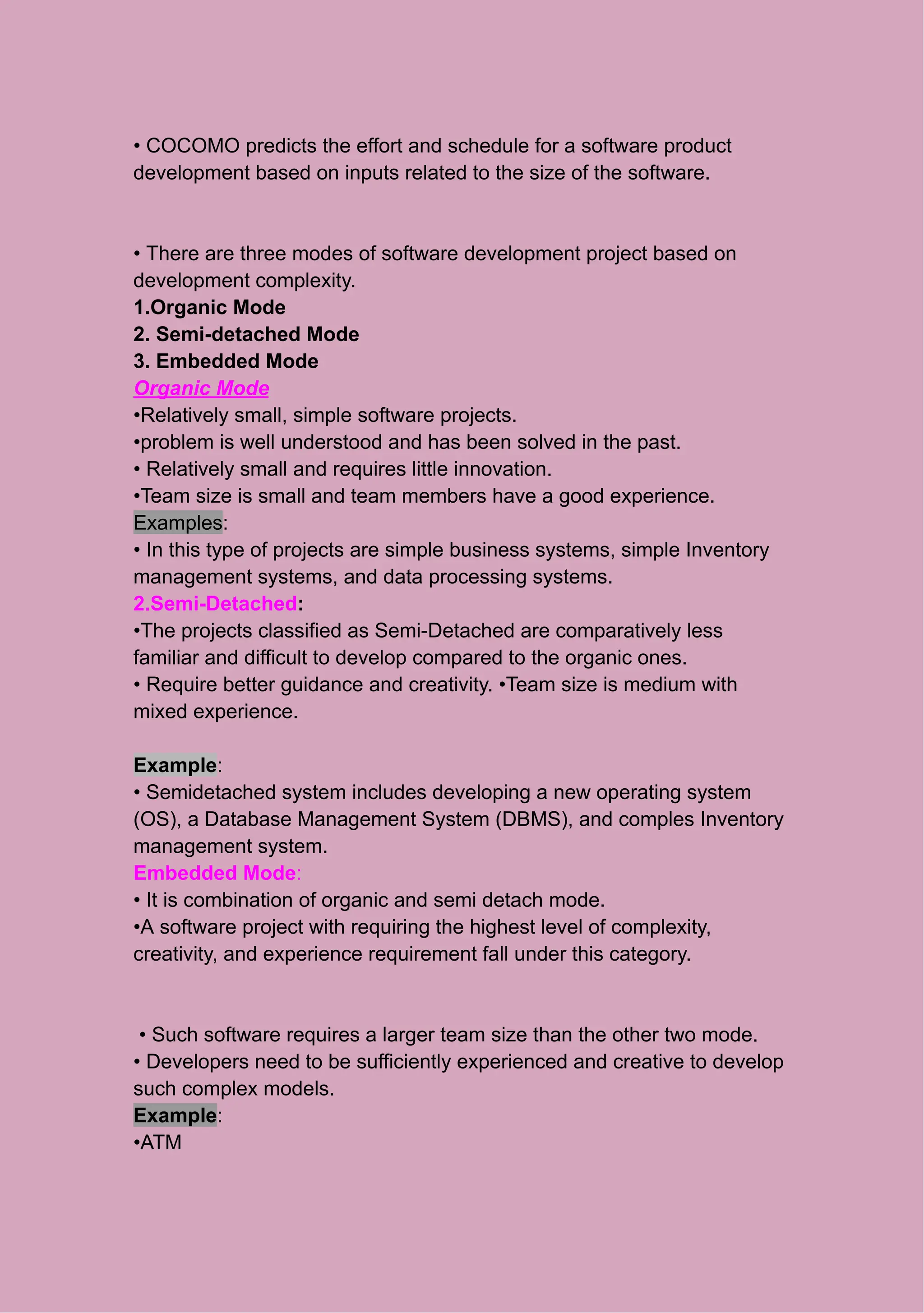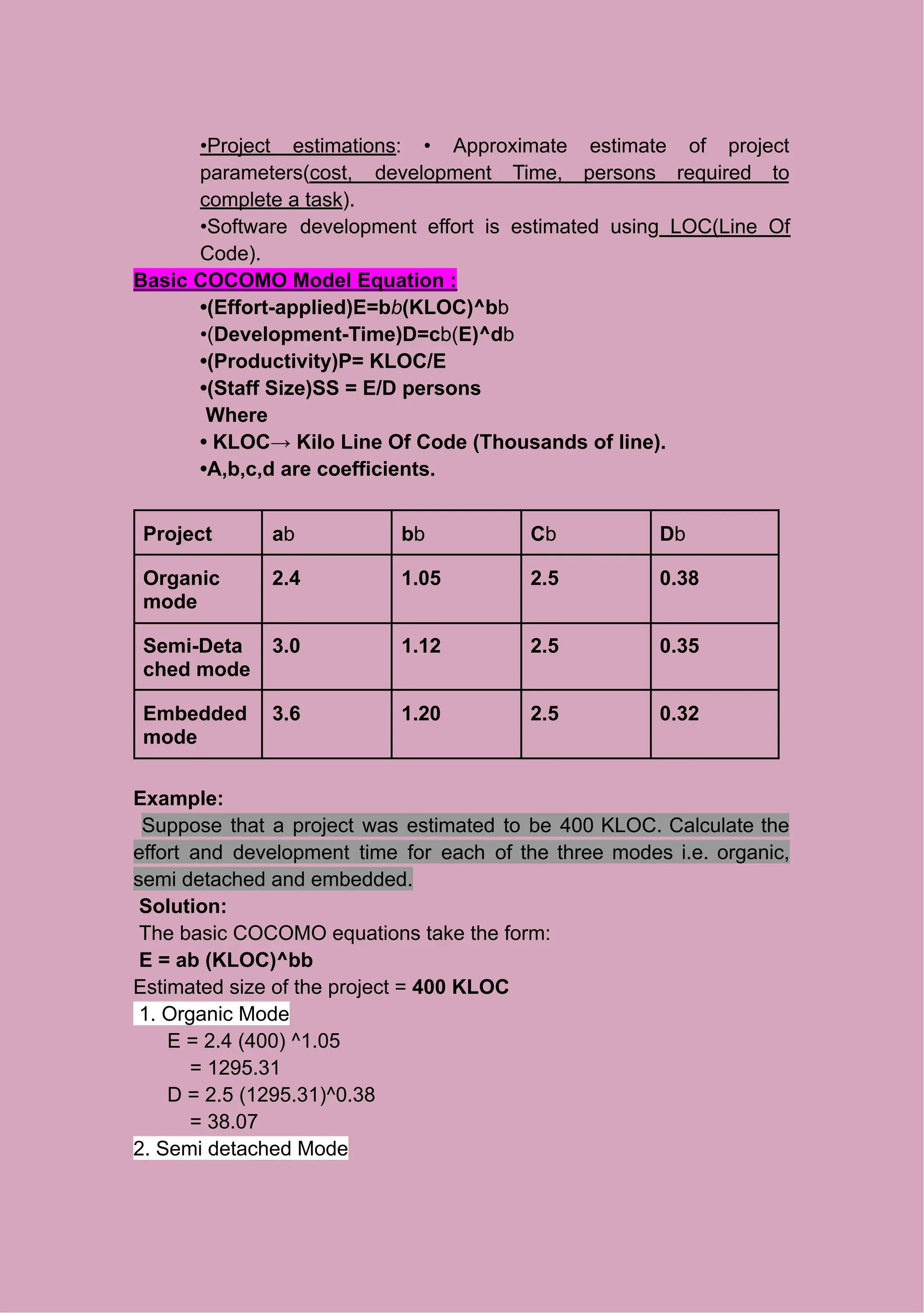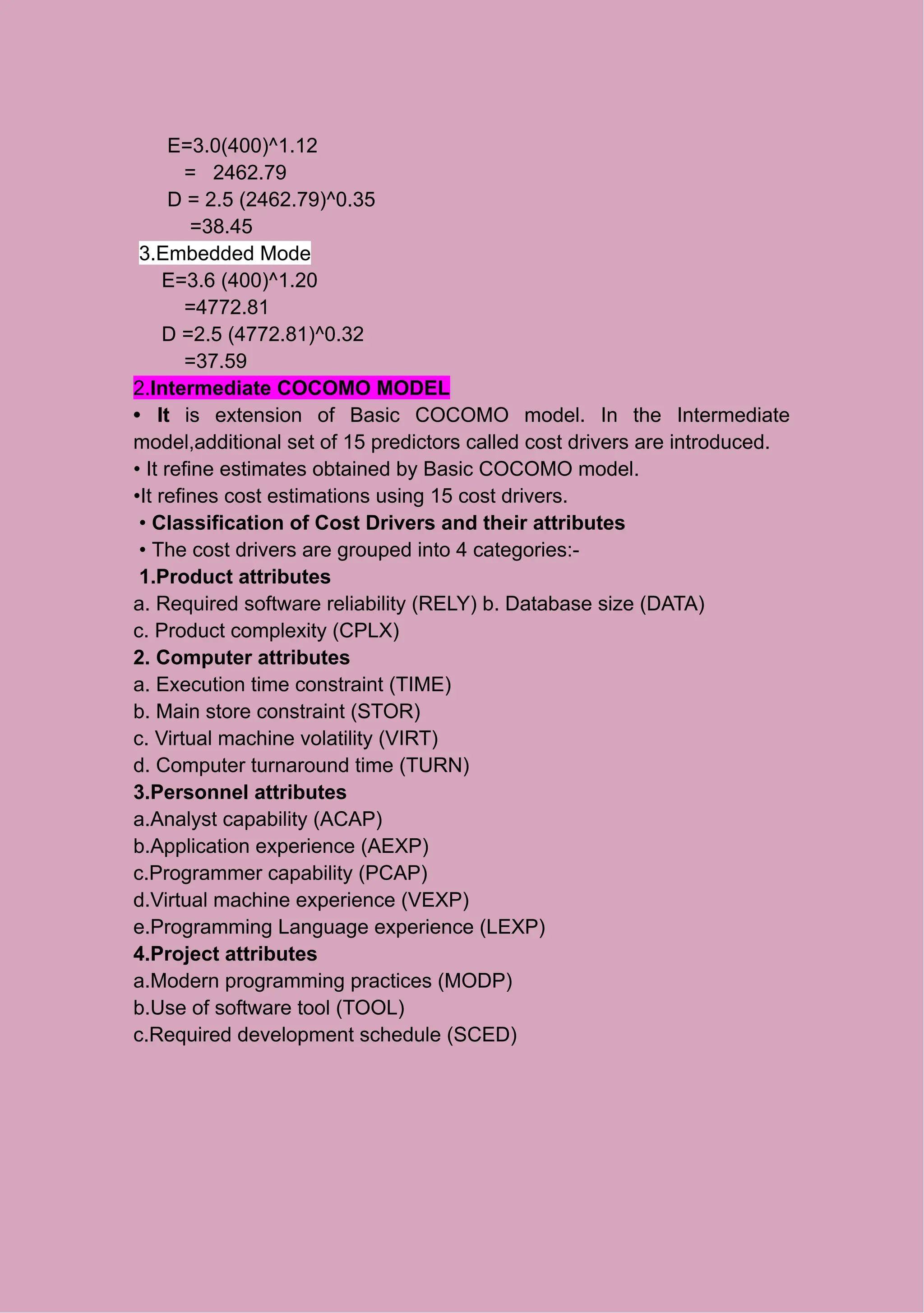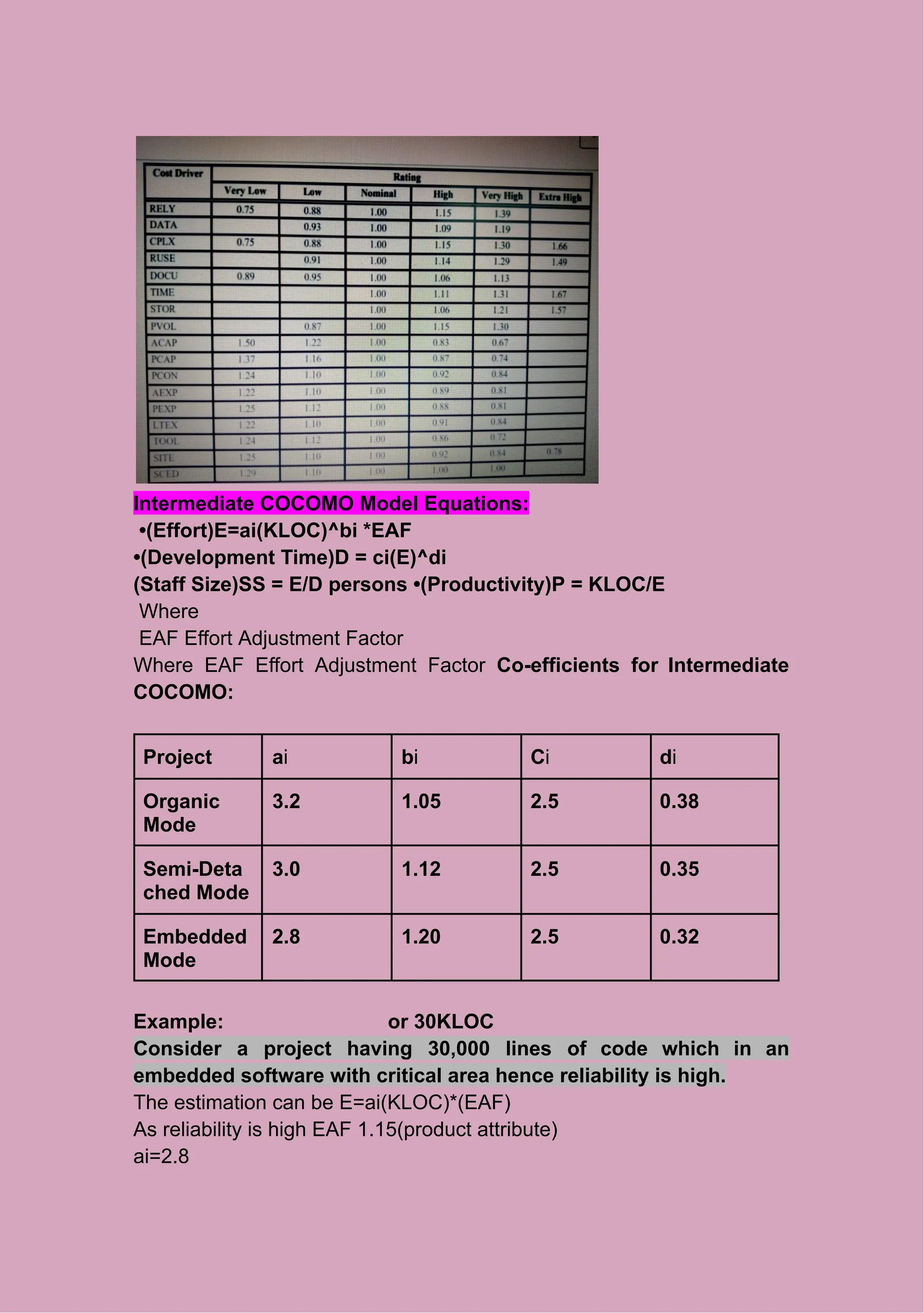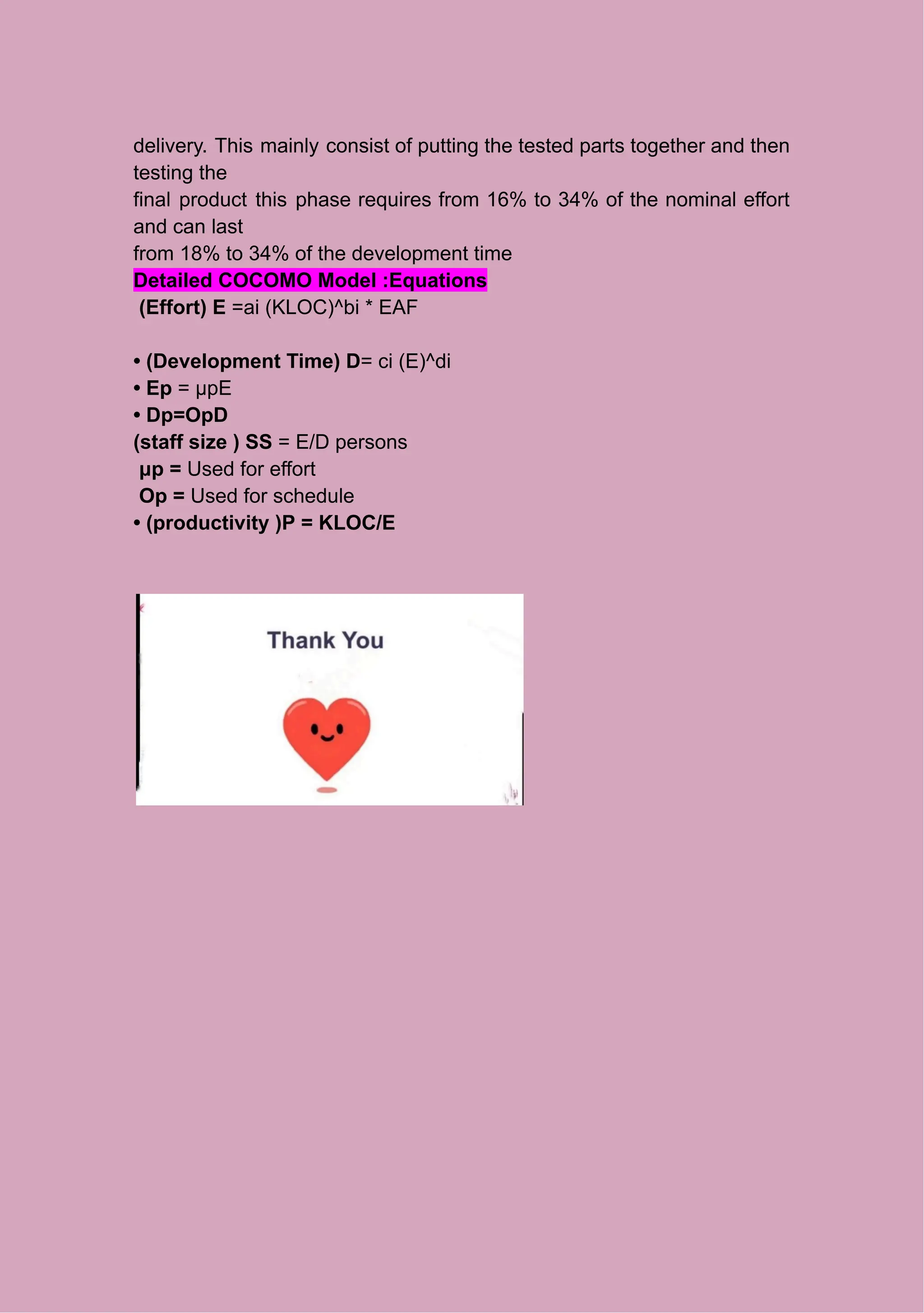The COCOMO model is a software cost estimation model that estimates development effort based on lines of code. There are three modes - organic, semi-detached, and embedded - that represent increasing complexity. The basic COCOMO model uses lines of code and coefficients to estimate effort and schedule. The intermediate COCOMO model refines estimates using 15 cost drivers related to product, computer, personnel, and project attributes. The detailed COCOMO model further divides the project into phases and modules to provide more granular estimates.

